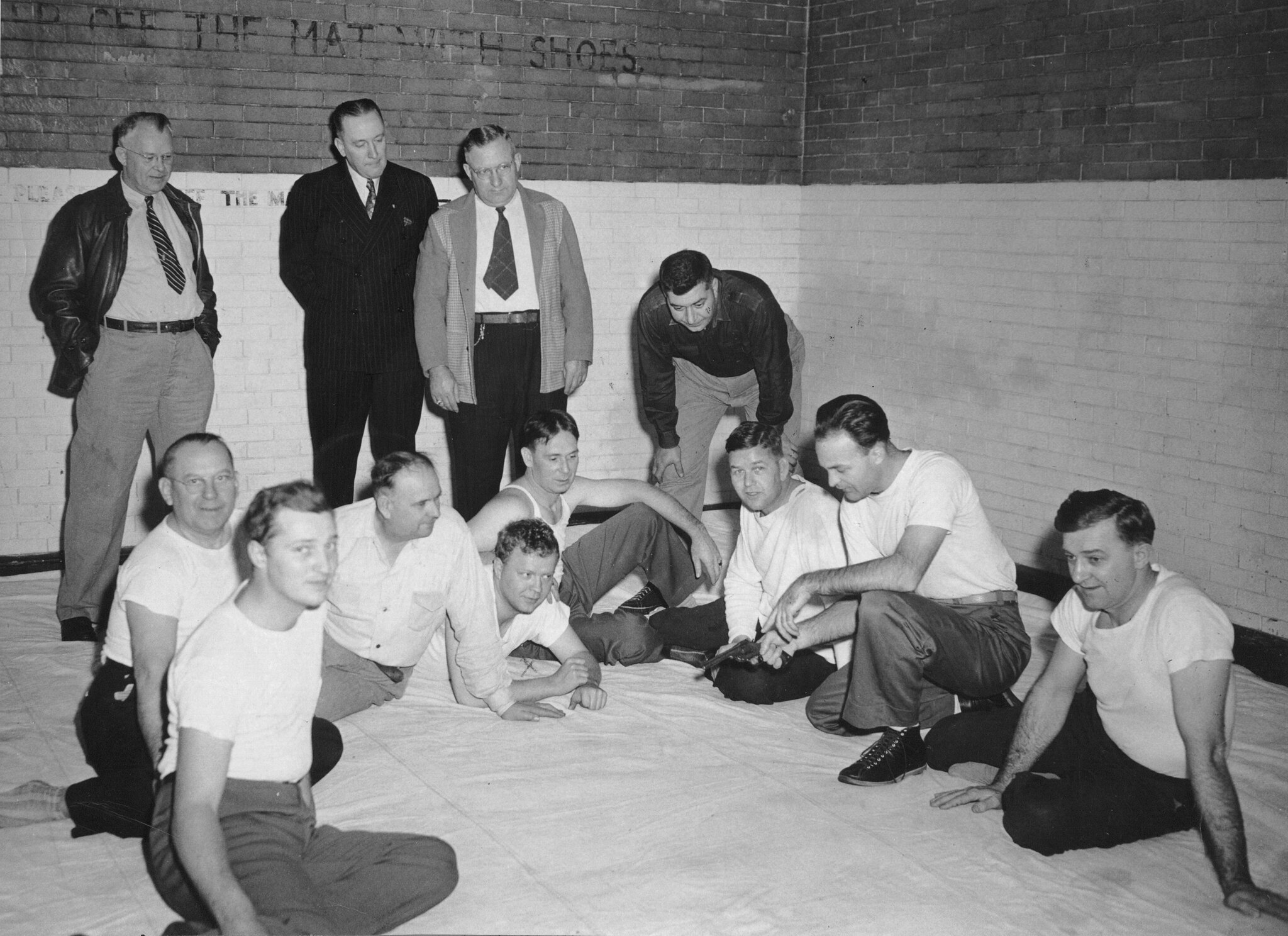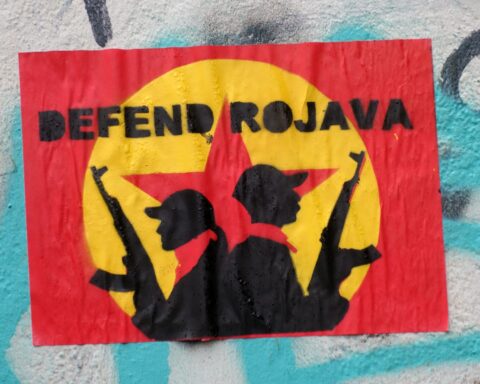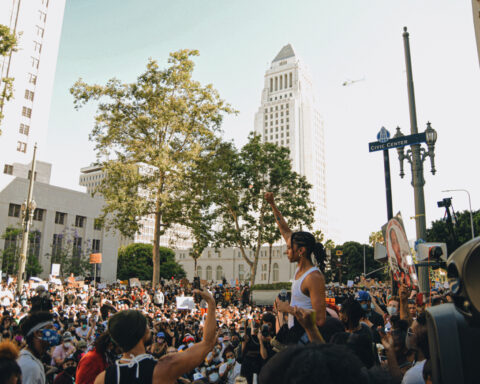By Salaar Maghazeh
On October 6th of 2017, a leaked official report detailing FBI’s August 3 intelligence assessment was obtained by Foreign Policy. The FBI report warned of what they called “Black Identity Extremism” (BIE), as a threat to law enforcement. The report defined Black identity extremists as individuals who sought to target “perceived” racism and injustice in American society through violent means. The report pointed to incidents of alleged police abuse against Black Americans as having “continued to feed the resurgence in ideologically motivated, violent criminal activity within the BIE movement”, citing a mere six unrelated acts of violence against the police as supposed evidence for such “ideologically motivated” criminal activity.
The leaked report was immediately met with major criticism contending that this new umbrella designation had no basis for its claims. Michael German, a former FBI agent and current fellow at the Brennan Center for Justice argued that this threat was intentionally manufactured. He noted clear parallels between the August 3 intelligence assessment and earlier FBI reports from the 1970s and 2010s which made baseless claims that violent attacks were ideologically connected. German has also noted that the data provided does not merit the creation of a new term nor surveillance of Black activist groups like Black Lives Matter. Rather, he highlighted the long history of FBI targeting Black activists and concluded that the term is applied to “Black people who scare them.” German has gone on to give a robust critique of the term in his congressional testimonies.
BLM activism as “Racially Motivated Violent Extremism”
Several years later in 2019, after the FBI claimed that it no longer used the term “Black Identity Extremism” in response to backlash, another leaked report revealed this to be a lie. The FBI documents obtained by Ken Klippenstein of the Young Turks demonstrated that not only did the FBI continue to view BIE as a legitimate threat despite much criticism of the initial report, the new documents established that BIE has been viewed as a top priority threat privileged above Al Qaeda, under the almost identically defined “Racially Motivated Violent Extremism”.
While the FBI report from 2017 obtained by Foreign Policy pointed to the use of the term “BIE,” the scope of its assessment and the significance attached to what the FBI deemed a “movement” remained unclear. However, the 2019 report not only revealed that the FBI continued to view BIE as a legitimate threat, but in its 2018 counter-terrorisim strategy guide, the FBI went as far as to label “Black Identity Extremists” as a “priority domestic terrorism target” that would require significant attention.
By 2019, the FBI had replaced the term BIE with the more general term, “Racially-Motivated Extremism”. Threat guidance from 2019 elaborating on terror threats included “Black Racially Motivated Extremism” as the new priority counter-terrorism target. This “new” term appears repeatedly and reuses identical language from the 2018 Black Identity Extremist definition to describe the BRME phenomena.
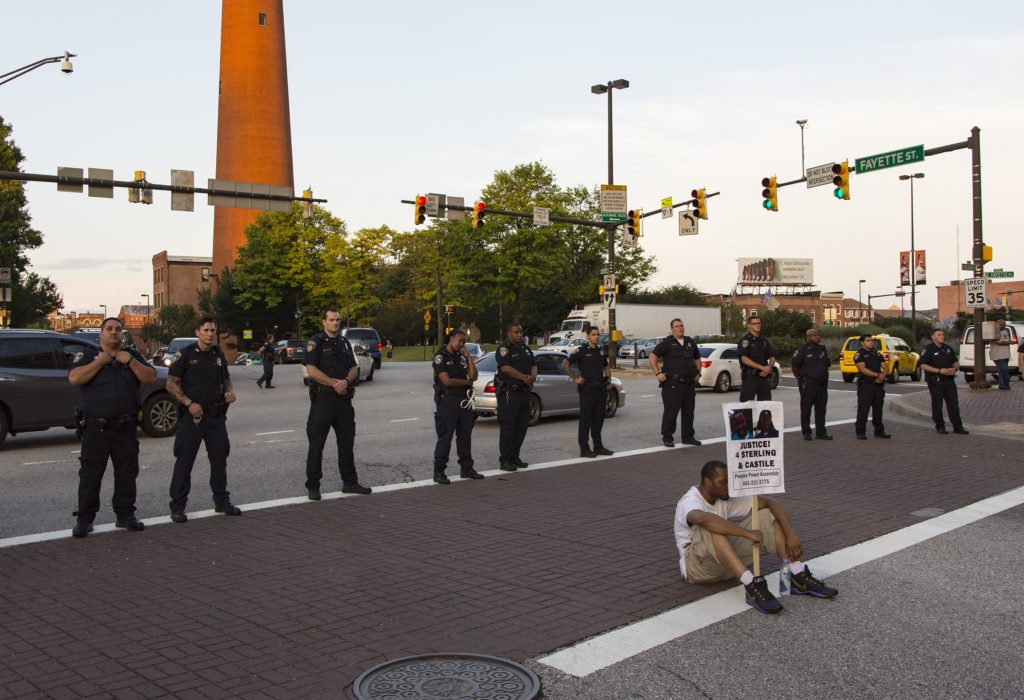
Protester in Springfield, MA (Bruce Emmerling)
Again in the FBI’s counter-terrorism priorities in 2020, “Black Racially Motivated Extremism” was changed to “Racially Motivated Violent Extremists”. However, a glance at how this new designation is defined demonstrates how the Bureau essentially copied its 2018 definition of BIE under its new label “Racially Motivated Violent Extremist.” The 2020 threat guidance defines RMVEs as “[using] force or violence in violation of criminal law in response to perceived racism and injustice in American society, or in an effort to establish a separate Black homeland or autonomous Black social institutions, communities, or governing organizations within the United States.” Putting this definition side-by-side with the definition provided for BIE in the 2017 report makes the difference between the two almost negligible.
The more general terms of Racially Motivated Violent Extremists also acknowledged white supremacist violence as a threat.
Under this new general heading, the FBI placed BIE effectively at the top of its priorities above terror groups like Al Qaeda from 2019 to 2020, even organizing a program referred to as “IRON FIST” in the documents, which apparently involves sending undercover agents into the field with the intent of collecting intelligence and countering the “domestic threat.”
A new report by civil liberties group Defending Rights and Dissent also points out that when choosing targets for an “assessment”, (a term which is to be distinguished from full-on investigations in that assessments do not require prior evidence of criminality) agents may choose based on ethnicity or speech with the condition that it is not the only factor used to initiate the assessment. The report remarks upon what it calls “extraordinarily low” standards for initiating an assessment as well as the fact that the FBI is “allowed to use extremely intrusive investigative techniques in performing them, including physical surveillance, use of informants, and pre-textual interviews.” Even the limits on assessments are incredibly lax. For example, assessments may be opened without approval for a 1-month period (after which a signature is needed to continue) and can be reauthorized an unlimited number of times. Alice Speri of the Intercept aptly concludes that this clause essentially means that “the FBI can surveil law-abiding citizens posing no national security threat for years.”
The dangers of the FBI fabricating the existence of a threat tied to “Black Identity Extremism” lies in that it legitimizes efforts to target Black activism and treat them as equal threats far-right, white supremacist extremism. Progressive grassroots activists become seen as a major national security threat when attention and resources should instead be dedicated towards investigating legitimate far-right violence. Experts have stated that a considerable amount of resources have gone into investigating BIE; Nusrat Choudhoury of the ACLU Racial Justice Program stated that “[the FBI] are spending a lot of energy on this and they are clearly reaching out to law enforcement” after noting the massive information collection program launched by the Bureau since 2016.
Far-right extremism under disproportionately low scrutiny
There is no symmetry in scale, significance, and danger between “BIE” and far-right extremism. As noted before, the original leaked report cited a mere six potential cases. Further leaked reports did not provide more cases. This dearth of evidence should suggest that a burgeoning Black Identity Extremist “movement” is an utter hallucination. Critics like Michael German have corroborated this (Critics called the report’s contents “fiction,” “fantasy,” “weak” and “irresponsible.”) Meanwhile, far-right, white supremacist terror remains a tangible and growing threat as the tides of far-right nationalism wash into global politics, and the statistics spell out this threat. According to the Anti-Defamation League, far right terror has been responsible for 73% of domestic extremist-related fatalities from 2009 to 2018.
The government has reported that far right extremists have been responsible for nearly three times as many attacks on U.S. soil as Islamic terrorists since 2001. From 2017 to 2018, there was a 35 percent spike of extremist-related murders, of which every one of them in 2018 was carried out by a right-wing extremist, according to the ADL. And now that far-right nationalists, white supremacists, etc. have begun to surge, along with racist rhetoric from Donald Trump as well as the political establishment that has emboldened such terrorists (think “invasion by migrant caravan”), we may have a pandora’s box on our hands; former FBI analyst Daryl Johnson stated that even if the FBI was to crack down hard on white supremacists and far-right nationalists, the momentum of these groups will persist for years. It’s important to note as well that this epidemic is global as well, like the far-right mass shooter in Christchurch who in his manifesto warned of the coming “white genocide” occurring through immigration. Global currents can further inspire and reinforce the domestic far-right threat, so as it gets worse everywhere else, it gets worse here and vice versa.
Insofar as the FBI continues to privilege a nonexistent threat over the very tangible dangers of fascism and white nationalists, the FBI may very well be insulating this threat to national security.
A common deflection of the significance of this leak may note that “well, the documents clearly also point to the far right as a threat as well.” However, this is missing the point. COINTELPRO also targeted the Ku Klux Klan, but that dismisses the fact that the majority of the program focused primarily on leftist, progressive, and Black movements that presented a threat to US imperialism and capitalism. Setting these as equal threats takes much needed attention away from legitimate threats like the far right. One relevant bit of evidence is provided by the “Media files,” stolen from the Media, Pennsylvania, office of the FBI in March 1971 by a group calling itself “the Citizen’s Commission to Investigate the FBI,” and widely distributed through left and peace movement channels. According to its analysis of the documents in this FBI office, 1 percent were devoted to organized crime, mostly gambling; 30 percent were “manuals, routine forms, and similar procedural matter”; 40 percent were devoted to political surveillance and the like, including two cases involving right-wing groups, ten concerning immigrants, and over 200 on left or liberal groups.
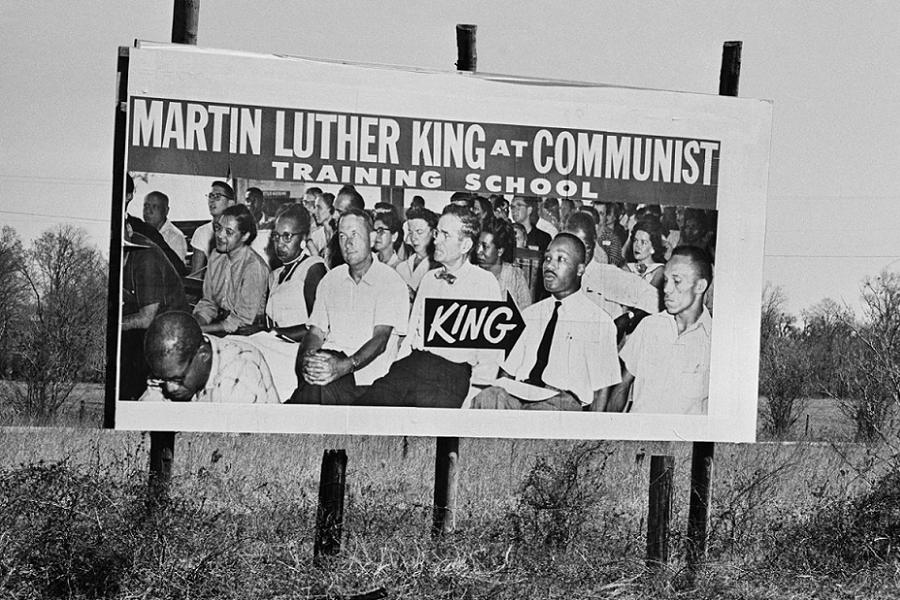
Implications throughout history
One cannot begin to grasp the significance and implications of FBI surveillance on “BIE” without recognizing the horrid historical background of FBI surveillance programs against leftist movements, anti-war movements, racial justice movements, indigenous movements, womens’ movements’, and working class movements from the 50s and 70s. During this period, the FBI carried out a counterintelligence program labeled “COINTELPRO” for short. The covert program was, as J. Edgar Hoover (the head of the FBI at the time) himself wrote in a communique, designed to “expose, disrupt, misdirect, and otherwise neutralize” so-called “subversive” groups, primarily in order to defend the “existing social and political order.” The instructions given by the Bureau directed agents to implement this neutralization by smearing activist leaders with negative personal information, creating “internal conflicts” within groups with undercover field agents, “restrict the ability to protest” through agents “promoting violence against police,” and restrict participation in dissenting groups’ activities by “false arrests” among other tactics.
The program solidified the FBI’s role as “the national political police” (as described by Chomsky) and essentially operated as an assault on activists and everyday working class civilians, engaging in acts ranging from beatings, psychological warfare, blackmail, political assassination, and terror. One significant aspect of the program was the disruption, surveillance, and violence waged on the Black movements of the period. In a secret document, Hoover outlined his goals and targets for the part of the program pertaining to Black movement, calling for the destruction of the momentum and solidarity of said movements; he specifically names the Student Nonviolent Coordinating Committee and Martin Luther King Jr.’s Southern Christian Leadership Conference (SCLC), categorizing them as violent “Black nationalist hate groups” who seek to “disrupt the country.”
The assassination of the legendary, charismatic Black Panther leader Fred Hampton occurred under the program as a collaboration between the Bureau and Chicago police (along with many other murders of Black Panthers occurring in other FBI raids.) FBI agent William O’Neal had shared floor plans of Hampton’s apartment with the executors of the raid and given a heavy barbiturate to render Hampton unconscious during the operation.
In another stunning instance of depravity and racism, the FBI continuously harassed Martin Luther King Jr. and the SCLC. At one point, the FBI sent a letter blackmailing Dr. King, urging him to commit suicide lest the bureau releases “intelligence” that would paint him in a poor light.
Running through the barbarism enacted upon the population by the Bureau, we also find that the FBI financed, headed, and armed extremist right-wing militia groups, organizing them under the heading of the “Secret Army Organization” (SAO). SAO forces targeted and violently repressed groups and leaders in the anti-war movement. In Seattle, FBI infiltrators carried out arson, firebombings of university buildings, and robberies.
By the time the program had finished, the Bureau had carried out major campaigns of what can only be described as domestic terrorism against the civilian population — terrorism that would merit comparison to the most brutal authoritarian states. (Such a conclusion is practically unthinkable in the mainstream spectrum of opinion, regardless of the overwhelming mountains of sources in the historical record documenting FBI brutality against dissenting civilian groups.)
Beyond legitimizing carrying out mass surveillance, this label proliferates fear among law enforcement, whether genuine fear or a defense given as plausible deniability in police brutality cases, about a false threat that may lead to even more police violence on Black and other minority communities.
Much like the FBI couching their unfounded panic over BIE in a “concern for national security,” the Church Committee dedicated to investigating the FBI’s abuses in COINTELPRO found that while “the claimed purposes of these action programs were to protect the ‘national security’ and to prevent violence, many of the victims were concededly nonviolent, were not controlled by a foreign power, and posed no threat to the national security.”
The BIE label gives an excuse for the state apparatus to carry out mass surveillance on a massive portion of activists, a terrifying carte blanche considering that investigations have discovered that white nationalists have maintained an active presence in the FBI via infiltration. This will lead to silencing and subversion of activist groups who are expressing legitimate critiques and rightful sentiments backed by empirical data about police brutality against the Black community. The term creates a blanket that can be drawn over any Black person or movement based in ending systemic racist oppression. This inevitably undermines nonviolent, grassroots Black activism like Black Lives Matter. In fact, surveillance of completely unrelated activist groups is already happening; documents obtained by The Intercept from the Department of Homeland Security’s Office of Operations Coordination show that the department meticulously and consistently collects information, location data, and other details on Black Lives Matter activities and members throughout multiple cities like Ferguson, Baltimore, DC, and New York.
The department monitored everything from peaceful marches (recording directions and routes to reproduce maps of the marches’ movements) to unrelated, smaller gatherings like a funk music parade in a historically Black neighborhood. Even DeRay Mckesson, prominent activist in Black Lives Matter (and yet very much so a figure of mainstream left-liberal politics), was visited and surveilled by the FBI while in his home in 2016. Combine the factors of white supremacist infiltration of the FBI with the surveillance underway and you can potentially have a state apparatus trying to contain and subvert activist movements.
Beyond legitimizing carrying out mass surveillance, this label proliferates fear among law enforcement, whether genuine fear or a defense given as plausible deniability in police brutality cases, about a false threat that may lead to even more police violence on Black and other minority communities. As Justin Hansford of the Thurgood Marshall Civil Rights Center at Howard University puts it, “not only can they go after these people with surveillance, but they can justify using the most aggressive, violent tactics. Whenever you create an assumption that somebody poses a physical threat to law enforcement, that provides incentive to shoot first and ask questions later.” The FBI has no control over how law enforcement branches interpret or read its reports. The lengthy history of Black communities being the target of police brutality and violent oppression has yielded an anxiety towards law enforcement not felt by other communities. On the other hand, this gives officers reasons to drive their interactions with these communities as stemming from personal fear. What is created is a cycle of police violence bred by enmity that has allowed officers to act with little consequence.
Lastly, the label deflects legitimate grievances and abuse of police tactics, leaving room to chalk up all critiques to ideological extremism.
The FBI frenzy over Black Identity Extremism is one of many illustrating the willingness and tendency of the state to unjustly surveil and subvert leftist (and sometimes even mildly progressive) movements in the United States that threaten the status quo.
The privilege of historical hindsight allows us to unequivocally denounce targeting of Black activists so long as these wrongs were “in our past.” This has created the illusion of being progressive and morally accountable without having to maintain applying these ideals into the present. Now is the time to show our consistency by condemning state surveillance both in the past and as it continues to exist to this day.
Featured image by mak506 licensed under CC BY-NC-ND 2.0
Salaar is a Political Science student at UC Irvine. He has contributed to New University campus newspaper and is interested in socialism, Marxist economic analysis, and U.S. foreign policy. He covers these on his blog and can be contacted by email at amaghaze@uci.edu.
Latest from Eon
- Abolition as a Project of Deep DemocracySince the police murder of George Floyd on May 25, 2020, a stunning uprising against state violence has spread to more than 2,000 American cities. As protests continue across the country from Seattle to Washington, D.C.—and even in smaller cities like Kenosha, Wisconsin and Stamford, Connecticut—the political momentum endures.
- On electoralism, grassroots power and disability justiceRead our conversation with Justin Farmer, a long-time community activist running for state senate in Connecticut.
- In defense of abolishing the policeCriminal justice in the US has evidently not shed itself of the violent racism and Christian theocracy out of which it was built and attempts to reform it are polluted by corporate interests. Abolition, on the contrary, can direct us towards creating models of real public safety.
If you enjoyed reading this, help support us by sharing it with others.
